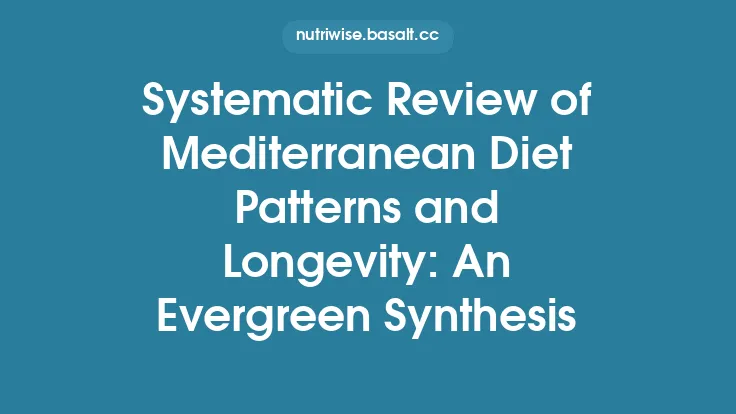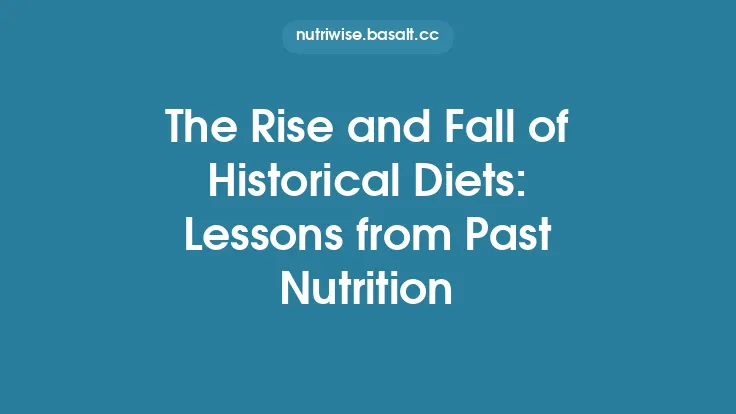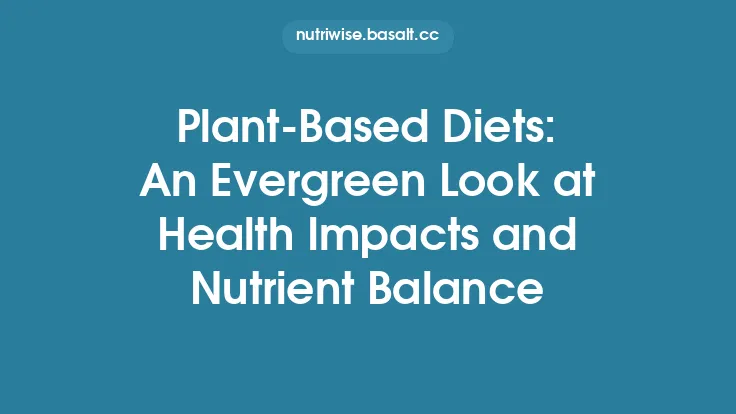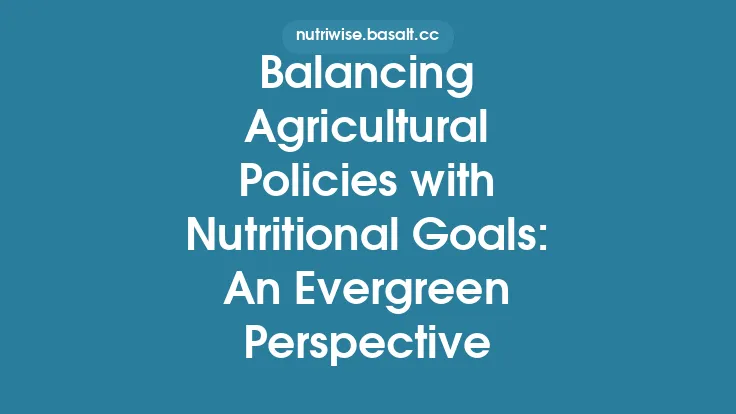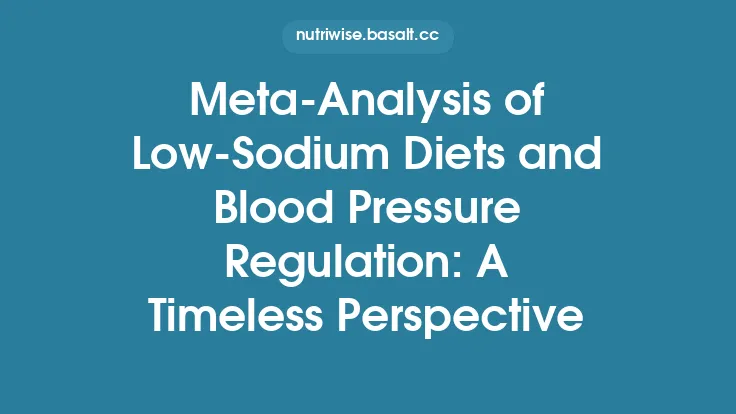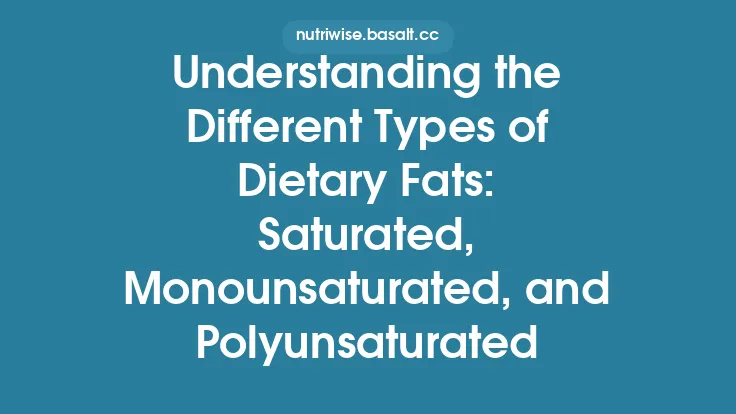Digital influencers have become a dominant voice in the nutrition conversation, shaping what millions of people believe about “the right way” to eat. Their reach, authenticity, and the speed at which they can disseminate information make them powerful conduits for both evidence‑based guidance and, unfortunately, diet myths that persist long after the original post has vanished. This article examines the structural and psychological underpinnings of influencer‑driven diet misinformation, outlines the most prevalent myths, and offers a framework for creating evergreen, scientifically sound nutrition content that can withstand the rapid churn of online trends.
Understanding the Role of Digital Influencers in Nutrition Discourse
Defining the Influencer Spectrum
Digital influencers occupy a continuum from macro‑influencers (followers > 1 million) to micro‑ and nano‑influencers (followers ranging from a few hundred to 50 k). While macro‑influencers command massive audiences, micro‑influencers often enjoy higher engagement rates and perceived authenticity, which can amplify the persuasive power of their messages.
Trust as Currency
Research consistently shows that audiences rate influencers as more trustworthy than traditional advertising sources. This trust is built on perceived relatability, frequent personal disclosures, and a narrative style that mimics peer‑to‑peer communication. When an influencer shares a personal “transformation story” or a “secret diet hack,” followers interpret it as experiential evidence rather than anecdotal speculation.
Platform Mechanics that Favor Nutrition Content
Algorithms on platforms such as Instagram, TikTok, and YouTube prioritize short‑form, visually appealing content. Nutrition posts that feature before‑and‑after photos, quick recipe reels, or “myth‑busting” captions are more likely to be surfaced, regardless of the underlying scientific rigor. The platform’s recommendation engines also create echo chambers: users who engage with diet‑related content are fed more of the same, reinforcing existing beliefs.
Mechanisms of Myth Propagation in Influencer Content
1. Narrative Simplification
Complex nutritional science is often reduced to a single, catchy claim (“Eat this fruit to burn belly fat”). This reductionist framing fits the limited attention span of scrolling users and makes the message easily shareable.
2. Visual Overload
High‑contrast graphics, before‑and‑after images, and dramatic color palettes create a visceral impact that can outweigh textual nuance. The brain processes visual cues faster than written explanations, leading to rapid acceptance of the visual narrative.
3. Social Proof and Bandwagon Effect
When an influencer’s post garners thousands of likes, comments, and shares, it signals social validation. Followers interpret this collective endorsement as evidence of efficacy, even when the underlying claim lacks empirical support.
4. Affiliate Links and Monetization
Many influencers embed affiliate links to supplements, meal plans, or “detox” kits. The financial incentive to promote products can bias content creation, subtly steering the narrative toward sales rather than scientific accuracy.
5. Algorithmic Reinforcement
Engagement metrics (likes, watch time, comments) feed back into the platform’s recommendation system, causing similar content to be promoted repeatedly. This feedback loop can entrench myths, making them appear as consensus.
Common Diet Myths Amplified by Influencers
| Myth | Typical Claim | Why It Persists | Scientific Counterpoint |
|---|---|---|---|
| Detox Diets | “A 3‑day juice cleanse flushes toxins and resets metabolism.” | Visually appealing before‑and‑after photos; promise of quick results. | The liver, kidneys, and gut microbiota already handle detoxification; no evidence that short‑term fasting improves toxin elimination. |
| Carb‑Free Everything | “Eliminate all carbs to lose weight instantly.” | Simple rule‑based guidance; aligns with low‑carb trends. | Carbohydrates are a primary energy source; balanced intake supports metabolic health; weight loss is driven by energy balance, not carb exclusion alone. |
| Superfood Overdose | “Consuming 2 cups of kale daily cures inflammation.” | “Superfood” label creates perceived superiority; easy to quantify. | Nutrient bioavailability varies; excessive intake can lead to antinutrient effects (e.g., oxalates in kale). Whole‑diet patterns matter more than single foods. |
| Meal Timing Hacks | “Eat only after 6 pm to boost fat loss.” | Aligns with intermittent fasting hype; easy to implement. | Total caloric intake and macronutrient distribution are more influential than timing; evidence for strict evening eating windows is mixed. |
| Supplement Miracles | “A single capsule of ‘fat‑burner X’ melts away belly fat.” | Quick fix narrative; affiliate revenue. | Most over‑the‑counter fat burners lack robust clinical trials; efficacy is often comparable to placebo. |
Scientific Evaluation: How to Distinguish Fact from Fiction
- Source Verification
- Check whether the claim cites peer‑reviewed literature, reputable institutions (e.g., WHO, NIH), or merely anecdotal testimonials.
- Look for DOI numbers or direct links to the original study.
- Study Design Scrutiny
- Randomized controlled trials (RCTs) provide higher evidence levels than observational studies or case reports.
- Assess sample size, duration, and whether the study population matches the influencer’s audience (e.g., age, health status).
- Statistical Significance vs. Clinical Relevance
- A statistically significant result (p < 0.05) may still have negligible real‑world impact if effect sizes are small.
- Examine confidence intervals and absolute risk reductions.
- Conflict‑of‑Interest Disclosure
- Identify any financial ties between researchers and supplement manufacturers.
- Influencers should disclose affiliate relationships; lack of disclosure raises red flags.
- Reproducibility
- Has the finding been replicated in independent studies? Single‑study claims are more vulnerable to bias.
The Economics Behind Influencer Diet Narratives
Revenue Streams
- Affiliate Marketing: Influencers earn commissions (5‑30 %) per sale generated through tracked links.
- Sponsored Content: Brands pay flat fees or product bundles for dedicated posts.
- Product Launches: Some influencers create their own supplement lines, capturing higher margins.
Incentive Alignment
When monetary gain is tied to product promotion, there is a natural bias toward sensational claims that drive clicks and conversions. This economic pressure can unintentionally prioritize virality over veracity.
Market Saturation and Differentiation
As the influencer space becomes crowded, creators seek niche “secret” diets to stand out. This drives the proliferation of increasingly obscure or untested diet concepts, perpetuating myth cycles.
Regulatory Landscape and Platform Policies
Federal and International Guidelines
- U.S. Federal Trade Commission (FTC): Requires clear disclosure of material connections between influencers and brands.
- European Union’s Unfair Commercial Practices Directive: Prohibits misleading health claims.
- Food and Drug Administration (FDA): Regulates labeling of dietary supplements; however, enforcement is limited to false claims of disease treatment.
Platform‑Specific Rules
- Instagram & Facebook: Enforce “Branded Content” tags for paid partnerships.
- TikTok: Introduced a “Health & Wellness” policy that restricts unverified medical claims.
- YouTube: Uses “Community Guidelines” to demonetize content that spreads misinformation, though enforcement is inconsistent.
Gaps and Challenges
- Rapid content turnover outpaces moderation.
- Influencers often operate across multiple jurisdictions, complicating enforcement.
- “Native advertising” (e.g., product placement within a vlog) can blur the line between editorial and promotional content.
Ethical Responsibilities of Influencers and Brands
- Transparency – Full disclosure of sponsorships, affiliate links, and personal financial stakes.
- Evidence‑Based Messaging – Commitment to referencing reputable sources and updating content when new research emerges.
- Audience Consideration – Avoiding one‑size‑fits‑all recommendations; acknowledging variability in individual health status.
- Avoiding Harm – Refraining from endorsing extreme restriction diets, untested supplements, or practices that could trigger disordered eating.
- Collaboration with Professionals – Partnering with registered dietitians, nutrition scientists, or medical experts to vet claims before publication.
Tools and Practices for Sustainable, Evergreen Nutrition Communication
| Tool | Function | How It Supports Evergreen Content |
|---|---|---|
| Reference Managers (Zotero, Mendeley) | Organize scientific literature | Enables quick citation of up‑to‑date studies, ensuring claims remain grounded in current evidence. |
| Content Calendars (Airtable, Notion) | Schedule posts and updates | Allows systematic review of older posts for accuracy, facilitating timely revisions. |
| Fact‑Checking Plugins (Credibility Score, NewsGuard) | Automated verification of sources | Flags outdated or debunked claims before publishing. |
| Design Templates (Canva, Adobe Express) with Data Visualization | Create clear, accurate graphics | Encourages use of evidence‑based charts rather than sensational imagery. |
| Audience Polls & Q&A Sessions | Gather feedback and misconceptions | Directly addresses myths circulating within the community, fostering a two‑way educational loop. |
Best Practices
- Modular Content: Structure videos and posts so that core scientific explanations can be reused across multiple topics.
- Version Control: Keep a log of claim revisions; annotate why a statement was updated (e.g., new meta‑analysis published).
- Long‑Form Evergreen Pillars: Produce comprehensive guides (e.g., “Understanding Macronutrients”) that serve as reference points, supplemented by timely trend pieces.
Future Directions: Toward a More Informed Influencer Ecosystem
Integration of AI‑Assisted Fact‑Checking
Emerging AI tools can scan influencer scripts in real time, flagging unsupported health claims and suggesting peer‑reviewed alternatives. Embedding such tools into content creation workflows could dramatically reduce the spread of diet myths.
Credential Verification Platforms
Blockchain‑based verification systems could allow influencers to attach immutable proof of professional qualifications (e.g., registered dietitian license) to their profiles, enhancing audience trust.
Community‑Driven Moderation
Crowdsourced rating systems, similar to product reviews, could enable followers to rate the scientific accuracy of posts, providing a market incentive for evidence‑based content.
Collaborative Knowledge Hubs
Partnerships between influencer networks and academic institutions could produce shared repositories of vetted nutrition information, accessible for quick reference during content production.
Policy Evolution
Regulators may move toward outcome‑based standards, requiring demonstrable evidence of claim accuracy rather than merely mandating disclosures. This shift would place the burden of proof on the content creator, encouraging higher standards of evidence.
Conclusion
Digital influencers occupy a unique nexus of personal storytelling, commercial incentive, and algorithmic amplification. While this position grants them unparalleled capacity to inspire healthier habits, it also equips them to disseminate persistent diet myths. By understanding the mechanisms that drive myth propagation, scrutinizing the economic and regulatory contexts, and adopting rigorous, evergreen communication practices, influencers—and the platforms that host them—can pivot from myth‑makers to reliable stewards of nutrition knowledge. The ultimate goal is a digital ecosystem where compelling storytelling coexists with scientific integrity, ensuring that audiences receive guidance that stands the test of time rather than the fleeting allure of the next viral trend.
